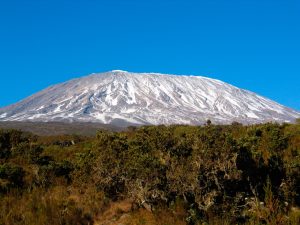Understanding Kilimanjaro Hike Weather
Overview of Kilimanjaro Hike Weather
Embarking on a journey to conquer Mount Kilimanjaro, the highest peak in Africa, is an exhilarating experience. However, understanding the weather conditions on the mountain is crucial for a successful and safe hike. The weather on Kilimanjaro is unpredictable and can change rapidly, making it essential for hikers to be prepared for all types of conditions.
Factors Affecting Weather on Kilimanjaro
Several factors influence the weather on Mount Kilimanjaro:
Altitude
As you ascend Kilimanjaro, you will pass through different climate zones, each with its own weather patterns. The temperature drops as you climb higher, with the summit often experiencing freezing temperatures. It is essential to pack layers of clothing to stay warm and comfortable during the hike.
Season
The weather on Kilimanjaro varies depending on the time of year. The mountain has two main climbing seasons: the dry season (January-March and June-October) and the wet season (April-May and November-December). The dry season offers clearer skies and better visibility, making it the preferred time for most hikers. However, the wet season brings rain and snow, which can make the trail slippery and more challenging.
Temperature
Temperatures on Kilimanjaro can range from hot and humid at the base to below freezing at the summit. It is essential to pack appropriate clothing for both extremes to stay comfortable and avoid hypothermia. Hikers should also be prepared for sudden temperature changes as they ascend or descend the mountain.
Wind
Wind speeds on Kilimanjaro can be intense, especially at higher elevations. Strong winds can make hiking more challenging and increase the risk of frostbite. Hikers should be prepared for windy conditions by wearing windproof layers and securing their gear to prevent it from blowing away.
Precipitation
Rain and snow are common on Kilimanjaro, especially during the wet season. Hikers should be prepared for wet conditions by packing waterproof gear and clothing. Wet weather can make the trail slippery and muddy, increasing the risk of accidents. It is essential to hike carefully and watch your step to avoid falls.
In conclusion, understanding the weather on Mount Kilimanjaro is essential for a successful and safe hike. By considering factors such as altitude, season, temperature, wind, and precipitation, hikers can prepare adequately and enjoy their journey to the summit. Sunset Africa Safari offers guided tours to Kilimanjaro, providing expert guides and support to ensure a memorable and safe hiking experience. For booking inquiries, please contact info@sunsetafricasafari.com.



